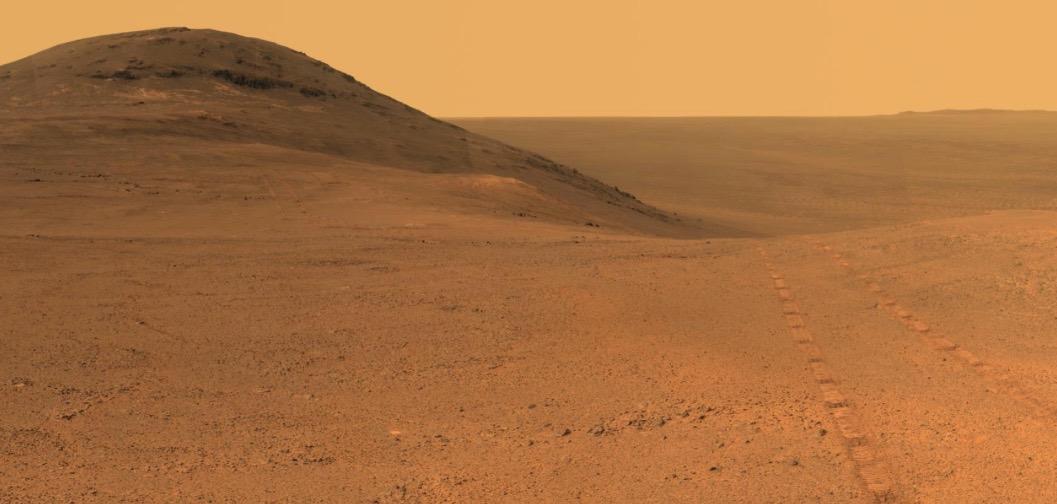With Mars Dust Storm Clearing, Opportunity Rover Could Finally Wake Up
If NASA's Opportunity Mars rover is still alive, we should hear from it relatively soon.
The solar-powered Opportunity hasn't made a peep since June 10, when a worsening dust storm plunged the rover's environs—a spot on the rim of the 14-mile-wide (22 kilometers) Endeavour Crater called Perseverance Valley—into deep darkness.
That storm grew to encircle the planet by June 20. But it started dying down in late July, and Opportunity's handlers think a return to normal conditions is finally just around the corner. [Mars Dust Storm 2018: What It Means for Opportunity Rover]
"The sun is breaking through the haze over Perseverance Valley, and soon there will be enough sunlight present that Opportunity should be able to recharge its batteries," John Callas, Opportunity project manager at NASA's Jet Propulsion Laboratory in Pasadena, California, said in a statement.
Mission controllers are already trying to hail Opportunity three times a week, beaming beep-eliciting commands via the big radio dishes of NASA's Deep Space Network (DSN) during times when the rover might be awake. But as soon as a measurement of atmospheric opacity known as "tau" dips under 1.5, the DSN communication campaign will step up significantly, Callas said. (At the dust storm's height, tau got all the way up to 10.8. More recently, it's been down in the 2-to-2.5 range.)

The clock will start ticking for Opportunity upon the initiation of this campaign.
"If we do not hear back after 45 days, the team will be forced to conclude that the sun-blocking dust and the Martian cold have conspired to cause some type of fault from which the rover will more than likely not recover," Callas said.
"At that point, our active phase of reaching out to Opportunity will be at an end," he added. "However, in the unlikely chance that there is a large amount of dust sitting on the solar arrays that is blocking the sun's energy, we will continue passive listening efforts for several months."
Opportunity has been exploring the Martian surface for more than 14 years. The golf-cart-size rover and its twin, Spirit, touched down in different locales on the Red Planet three weeks apart in January 2004.
Both rovers embarked on 90-Earth-day missions to hunt for signs of past water activity on Mars. And both found lots of such evidence, and then kept rolling along. Spirit last communicated with Earth in March 2010, but Opportunity remained healthy and productive until the dust storm forced it into a sort of hibernation.
The biggest threat to the rover in its current state is cold weather, mission team members have said. Opportunity cannot operate its onboard heaters, so if temperatures drop too much, some of the robot's critical internal components could break. But there's a silver lining to the dust clouds: Dust traps heat, making the potentially dangerous Martian nights a little warmer than they otherwise would be.
"In a situation like this, you hope for the best but plan for all eventualities," Callas said. "We are pulling for our tenacious rover to pull her feet from the fire one more time. And if she does, we will be there to hear her."
Copyright 2018 SPACE.com, a Purch company. All rights reserved. This material may not be published, broadcast, rewritten or redistributed.








